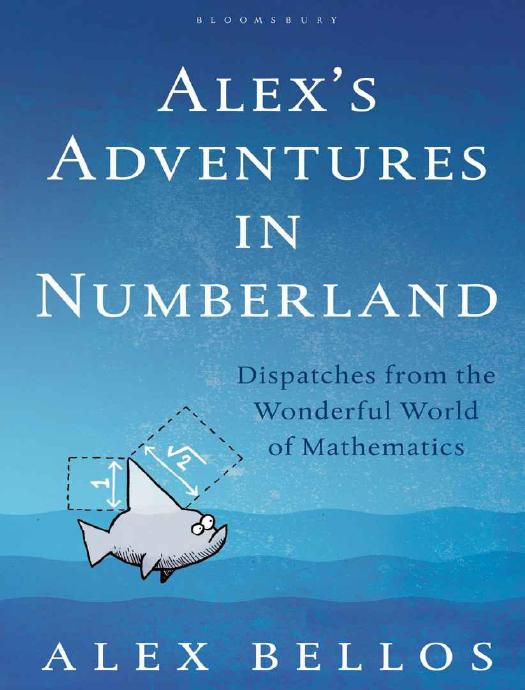Alexâs Adventures in Numberland by Bellos Alex

Author:Bellos, Alex [Bellos, Alex]
Language: eng
Format: epub, mobi, pdf
Publisher: Bloomsbury
Published: 2010-04-05T05:00:00+00:00
Completing any puzzle is immensely gratifying to the ego, but part of the extra allure of completing a Sudoku is the inner beauty and balance of the perfect Latin square that gives it its form. Sudokuâs success is testament to an age-old, cross-cultural fetish for number squares. And unlike many other puzzles, its success is also a remarkable victory for mathematics. The puzzle is maths by stealth. Although Sudoku contains no arithmetic, it does require abstract thought, pattern recognition, logical deduction and the generation of algorithms. The puzzle also encourages an aggressive attitude towards problem-solving, and fosters an appreciation of mathematical elegance.
For instance, as soon as you understand the rules of Sudoku, the concept of a unique solution is remarkably clear. For every pattern of numbers in the grid at the start, there is only one possible final arrangement for the numbers in the empty spaces. However, it is not the case that every partially filled grid has a unique solution. It is perfectly possible that a 9 Ã 9 square with some numbers filled in has no solutions, just as it is perfectly possible that it has many solutions. When Sky TV launched a Sudoku show, they drew what they claimed was the worldâs largest Sudoku by cutting a 275 Ã 275ft grid out of a chalk hillside in the English countryside. However, the given numbers were placed in such a way that there were 1905 valid ways to complete the square. The roclaimed largest Sudoku did not have a unique solution, and therefore was not a Sudoku at all.
The branch of mathematics that involves the counting of combinations, such as all the 1905 solutions to Sky TVâs faux Sudoku, is called combinatorics. It is the study of permutations and combinations of things, such as grids of numbers, but also, famously, the schedules of travelling salesmen. Letâs say, for instance, that Iâm a travelling salesman and I have 20 shops to visit. In what order should I visit them so that my total distance is the shortest? The solution requires me to consider all the permutations of paths between all the shops, and is a classic (and extremely difficult) combinatorial problem. Similar problems arise throughout business and industry, for example in scheduling flight departure times at airports or having an efficient postal sorting system.
Combinatorics is the branch of maths that most consistently deals with extremely high numbers. As we saw with magic squares, a small set of numbers can be rearranged in an astonishingly large number of ways. Though they both share square grids, there are fewer Latin squares than magic squares for the same size of grid, though the number of Latin squares is still colossal. The number, for example, of 9 Ã 9 Latin squares is 28 digits long.
How many possible Sudokus are there? If a 9 Ã 9 Latin square is to qualify as a finished Sudoku grid, the 9 subsquares must also include every digit, and this reduces the total of Sudoku-ready 9 Ã 9 squares to 6,670,903,752,021,072,963,960.
Download
Alexâs Adventures in Numberland by Bellos Alex.mobi
Alexâs Adventures in Numberland by Bellos Alex.pdf
This site does not store any files on its server. We only index and link to content provided by other sites. Please contact the content providers to delete copyright contents if any and email us, we'll remove relevant links or contents immediately.
What's Done in Darkness by Kayla Perrin(25490)
Shot Through the Heart: DI Grace Fisher 2 by Isabelle Grey(18208)
Shot Through the Heart by Mercy Celeste(18152)
The Fifty Shades Trilogy & Grey by E L James(17767)
The 3rd Cycle of the Betrayed Series Collection: Extremely Controversial Historical Thrillers (Betrayed Series Boxed set) by McCray Carolyn(13181)
The Subtle Art of Not Giving a F*ck by Mark Manson(12896)
Scorched Earth by Nick Kyme(11822)
Stepbrother Stories 2 - 21 Taboo Story Collection (Brother Sister Stepbrother Stepsister Taboo Pseudo Incest Family Virgin Creampie Pregnant Forced Pregnancy Breeding) by Roxi Harding(11014)
Drei Generationen auf dem Jakobsweg by Stein Pia(10210)
Suna by Ziefle Pia(10178)
Scythe by Neal Shusterman(9250)
International Relations from the Global South; Worlds of Difference; First Edition by Arlene B. Tickner & Karen Smith(8599)
Successful Proposal Strategies for Small Businesses: Using Knowledge Management ot Win Govenment, Private Sector, and International Contracts 3rd Edition by Robert Frey(8404)
This is Going to Hurt by Adam Kay(7681)
Dirty Filthy Fix: A Fixed Trilogy Novella by Laurelin Paige(6444)
He Loves Me...KNOT by RC Boldt(5796)
How to Make Love to a Negro Without Getting Tired by Dany LaFerrière(5367)
Interdimensional Brothel by F4U(5298)
Thankful For Her by Alexa Riley(5148)
